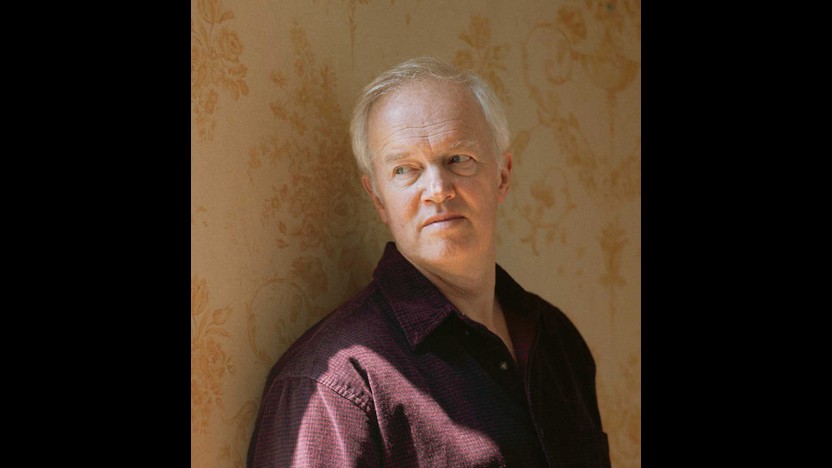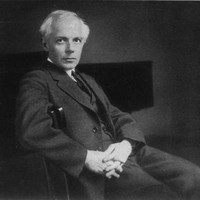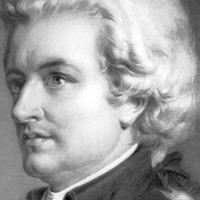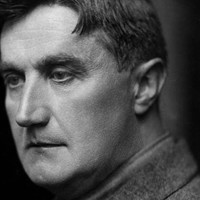Mozart’s Jupiter Symphony

Sponsored By
- November 1, 2013

- November 2, 2013


Sponsored By



By 1939, Béla Bartók’s life in Hungary was crumbling around him, especially after the Nazis seized his publisher in Vienna, but he felt bound to stay in Europe to care for his gravely ill mother. It was a much-needed relief then when the fabulously wealthy Swiss conductor and patron Paul Sacher commissioned a new piece for his chamber orchestra, an offer that came with the use of a vacation house in Switzerland. Bartók spent fifteen days that summer avoiding newspapers and composing the Divertimento for strings.
The Divertimento’s title and carefree attitude align with Wolfgang Amadeus Mozart, who elevated his era’s preferred form of party music to new levels of sophistication. In another historical nod, the scoring honors the Baroque concerto grosso tradition, in which individual voices emerge from the larger string orchestra to create contrasting colors and densities of sound. The themes themselves are quintessential Bartók, steeped in the folksongs of his native Hungary and chiseled into telltale fragments with an uncanny sense of symmetry and order.
Contrasting the rustic cheer of the first movement, the Molto adagio middle movement circulates from smooth, pacing lines into a swirling cloud of trills before dissipating for a quiet conclusion. The Allegro assai finale returns to fun and games in the form of call-and-response melodies, sudden interruptions, and a plethora of string effects, all capped with a manic sprint.
Aaron Grad ©2023

Mozart spent much of his youth traveling through Europe, performing in circumstances arranged by his enterprising father, Leopold. Their last major trip together took them through Italy for more than a year, until they returned to Salzburg in December 1771. This period marked a turning point for Mozart, for at age fifteen he was getting a little old to be paraded around by his father as a child prodigy. At the same time, the death of their Salzburg patron Archbishop Schrattenbach, who had named Leopold Assistant Kapellmeister and Wolfgang an honorary Konzertmeister, complicated their standing at home, and the new Archbishop, Hieronymus Colloredo, proved to be a troublesome employer.
Those problems at court did not slow Mozart’s composing, nor did two follow-up trips to Milan to present music for which Leopold had secured commissions on their earlier visit. Mozart wrote more than twenty symphonies between 1771 and 1774, nearly half of his lifetime output. He also made fruitful forays into concerto writing, completing his first violin concerto and his first original piano concerto in 1773. He added a Bassoon Concerto in 1774, his first concerto for a woodwind instrument. He may have composed the work for Thaddäus Freiherr von Dürnitz, an amateur bassoonist and patron. Evidence suggests that Mozart composed more bassoon concertos around the same time, but sadly those works are lost.
The bassoon was well established by Mozart’s time. Its typical role was to support a bass line in unison with the cellos and double basses, but there were plentiful examples of bassoons in solo roles, either alone or along with other instruments in a Sinfonia Concertante. The first movement of Mozart’s concerto, with its lyrical lines, wide-ranging leaps, and pecking staccatos, shows off some of the bassoon’s many strengths. The Andante ma adagio movement gives the bassoon smooth, voice-like phrases; Mozart later reused the main theme in the cavatina “Porgi, amor,” in The Marriage of Figaro. The finale is a Rondo, in the dancing, three-beat meter of a minuet. The bassoon plays the main theme only once near the end, and otherwise flits through the intervening episodes issuing a stream of lively figures.
Aaron Grad ©2013

For 200 years following Henry Purcell’s death in 1695, England produced no homegrown composer of international importance. The long dry spell finally broke with the emergence of Edward Elgar, Gustav Holst, and Ralph Vaughan Williams around the turn of the twentieth century. Vaughan Williams especially understood that a thriving English music could not just mimic continental styles—even though he sought out Max Bruch in Germany and Maurice Ravel in France to study their crafts thoroughly. The seeds of Vaughan Williams’s distinctly British voice came, as he wrote in 1912, from the sounds of everyday life all around him, “for instance, the lilt of the chorus at a music-hall joining in a popular song, the children dancing to a barrel organ, the rousing fervour of a Salvation Army hymn, St Paul’s and a great choir singing in one of its festivals, the Welshmen striking up one of their own hymns whenever they win a goal at the international football match, the cries of the street pedlars, the factory girls singing their sentimental songs.”
Vaughan Williams composed the Oboe Concerto in 1942 (borrowing material originally sketched as part of the Fifth Symphony), and revised it heavily in 1943. The scheduled premiere at the Proms concerts in London was canceled due to German bomb attacks during the summer of 1944, but the work’s dedicatee, oboist Léon Goossens, was able to debut the concerto that September in Liverpool. Vaughan Williams tailored the concerto to Goossens’s playing, which was distinguished by its wide, warm vibrato and expressive freedom. The opening movement, Rondo pastorale, employs musical patterns borrowed from outside the concert hall, including folk-like pentatonic modes and a distinctive note grouping with a lowered fifth degree, aptly known as the “blues scale” among improvising musicians.
The middle movement is a brief minuet, featuring a sing-song theme that the oboe introduces over pizzicato echoes. The contrasting section is categorized as a musette—an old form named after an instrument related to the bagpipe—and the oboe supplies the droning notes that are typical of the style.
The concerto saves its most substantial statement for the finale. The scampering motives in 3/4 time jibe with the scherzo classification, but the movement is no mere “joke,” to take the term “scherzo” at face value. One episode strikes up a lyrical waltz, and a longer interruption halves the tempo and winds through melancholy phrases that mirror the “blue-note” passages and pentatonics of the first movement. The soloist dashes through one last burst in the initial presto tempo, but the final chords affirm the gentler side of the movement.
Aaron Grad ©2013
 Listen to Audio
Listen to Audio
When Wolfgang Amadeus Mozart began writing symphonies, he was an eight-year-old keyboard prodigy in London, where he had played for King George III and befriended Johann Christian Bach — the youngest son of Johann Sebastian Bach, and a trendsetter in the emerging genre of the symphony. Mozart’s earliest symphonies naturally followed the bright and clean style mastered by the “London” Bach. Later, as a teenager back in his hometown of Salzburg, Mozart looked to the example of Joseph Haydn, whose brother happened to work alongside Mozart and his father. Some of the symphonies Mozart wrote as a seventeen- and eighteen-year-old ranked among his first truly brilliant compositions, and by that time he had already completed three-fourths of his lifetime symphonic output.
Mozart had fewer occasions to write symphonies during his heyday as a busy freelancer in Vienna. He might never have written his three final symphonies were it not for the money troubles that plagued his final years, a period when demand for his performances had dried up. Some opportunity must have sparked this symphonic trilogy (a detail historians have not managed to unearth), but most likely nothing came of it. Mozart may not even have heard all three before he died.
Mozart’s final symphony, completed on August 10, 1788, has long been known as the Jupiter Symphony, a moniker probably added by Johann Peter Salomon, the same shrewd impresario who later brought Franz Joseph Haydn to London. The opening movement, set in an energized Allegro vivace tempo, establishes a ceremonial atmosphere with an abundance of quick, stepwise swoops. The Andante cantabile slow movement follows with serene and spacious music, in which ample rests and breaks leave melodies unaccompanied, downbeats unstressed, and textures uncluttered.
Like in the symphonies by his friend Haydn, the minuet functions as a light-hearted palate cleanser. The main “joke” here comes in the form of phrases that slip down through segments of the chromatic scale, touching on notes that momentarily clash with the home key.
The finale introduces a number of related themes and then juggles them with a variety of contrapuntal techniques. This balancing act reaches its climax in the coda, which contains a swirling fugue treatment of all five main themes at once. It proves how well Mozart absorbed the techniques of Johann Sebastian Bach, at a time when most composers dismissed such formal counterpoint as hopelessly old-fashioned, and it affirms Mozart’s godlike talent for marrying intellectual clarity with earth-shaking emotion.
Aaron Grad ©2022
Get driving directions and find nearby parking.
Find dining options close to the venue.
View seating charts to find out where you'll be seating.
Get driving directions and find nearby parking.
Find dining options close to the venue.
View seating charts to find out where you'll be seating.
